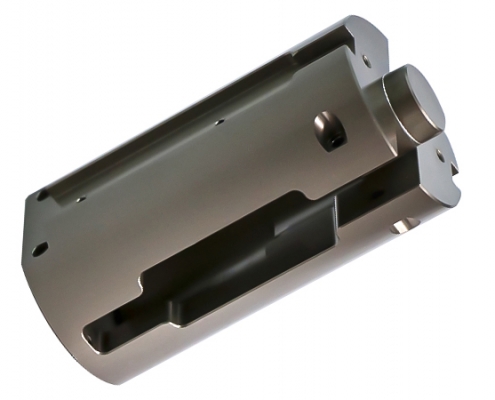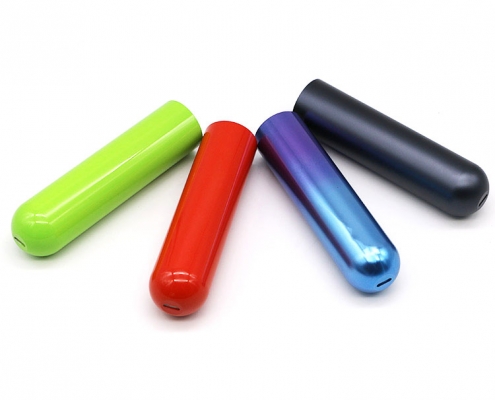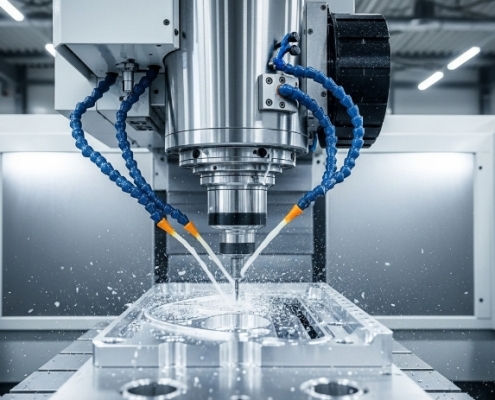Hard Anodizing Explained: Benefits for CNC Machined Parts
Struggling with wear, corrosion, or fading finishes on CNC parts? These issues damage performance, reduce lifespan, and cost you money. Hard anodizing is the long-term solution.
Hard anodizing enhances CNC machined parts by providing superior wear resistance, corrosion protection, and electrical insulation. It strengthens aluminum parts while allowing aesthetic color aluminum anodizing, making it ideal for high-performance industries.
Let’s explore why hard coat anodize is essential for CNC applications.
What Is Hard Anodizing?
Hard anodizing is a process that makes metal parts, especially aluminum, stronger and more durable. It is commonly used after CNC machining to improve the surface quality of precision parts.
This method uses electricity and a chemical bath to create a thick, hard layer on the outside of the metal. That new layer becomes part of the metal itself and acts like a protective shell. For customers who need CNC machined parts to resist wear, corrosion, or harsh environments, hard anodizing is one of the most reliable surface treatments available.

How Does Hard Anodizing Work?
Hard anodizing works by placing the metal part into a special acid solution and running an electric current through it. This triggers a chemical reaction on the surface of the metal, forming a strong, protective outer layer called an oxide layer. For hard anodizing, the process uses colder temperatures and higher voltage compared to regular anodizing. This creates a thicker and tougher surface, often known as Type 3 anodizing, which is much more resistant to wear and damage.
| Process Type | Temperature | Voltage | Coating Thickness |
|---|---|---|---|
| Type 2 (Decorative) | Room temperature | 12 to 18 volts | 5 to 25 microns |
| Type 3 (Hard) | 0 to 5°C | 60 to 100 volts | 25 to 100 microns |
What Are the Key Benefits of Hard Anodizing for CNC Parts?
-
High wear resistance
The surface reaches over 60 HRC in hardness. This helps the part resist scratches, friction, and mechanical wear. It performs well in moving systems or tight tolerance assemblies. -
Strong corrosion protection
The anodized layer blocks moisture, salt, and chemicals. This makes it suitable for marine, outdoor, and industrial use where metal parts often fail. -
Electrical insulation
The coating does not conduct electricity. This protects components in electronic housings and prevents current leakage or short circuits. -
Heat resistance
Hard anodized parts stay stable under high temperatures. They are ideal for automotive engines, aerospace assemblies, and industrial machinery. -
Smooth surface finish
The result is a dense, uniform surface with low porosity. It meets both functional and visual standards for high-end CNC components. -
Supports secondary coatings
The anodized surface allows easy application of paints, lubricants, or color aluminum anodizing. This adds flexibility for further customization.
Which Materials Are Suitable for Hard Anodizing?
Hard anodizing works best on aluminum and its alloys. These materials are widely used in CNC machining because they are lightweight and easy to process.
| Material | Hard Anodizing Suitability | CNC Industry Implications |
|---|---|---|
| Aluminum 2000 Series | High suitability | Offers excellent wear resistance and hardness. Ideal for aerospace and automotive parts |
| Aluminum 5000 Series | High suitability | Provides superior corrosion resistance. Frequently used in marine and outdoor components |
| Aluminum 6000 Series | High suitability | Combines strength and good machinability. Common in structural and industrial parts |
| Aluminum 7000 Series | High suitability | Highest strength aluminum alloys. Suited for high-performance CNC machined components |
| Titanium | Compatible | Supports anodized finishes with corrosion protection and aesthetic versatility |
| Steel including red steel | Not suitable | Does not form a stable oxide layer. Requires other coatings like plating or powder coating |
When Should You Use Hard Anodizing Instead of Regular Anodizing?

How Long Does the Hard Anodizing Layer Last?
Under typical operating conditions, the hard anodized layer on CNC machined parts can last for decades without significant degradation. This is due to the dense, ceramic-like oxide film that bonds directly to the aluminum substrate, providing a highly durable surface.
In harsh environments such as marine, chemical exposure, or heavy industrial use, hard anodizing offers corrosion protection and wear resistance far superior to traditional paint or plating. Unlike coatings that sit on top of the metal and may chip, peel, or crack, the anodized layer is integral to the metal surface, making it much more resistant to mechanical damage and environmental factors.
Hard Anodizing Color Options and Their Typical Industrial Applications
Due to the dense and thick oxide layer produced by hard anodizing, the range of achievable aluminum anodization colors is more limited compared to decorative anodizing. Despite this, specific colors are strategically applied in various industries to meet both functional and branding needs.
These colors not only provide aesthetic value but often serve purposes such as corrosion resistance, identification, or electromagnetic interference shielding in demanding CNC machined parts.
| Anodizing Color | Common Industrial Applications | Functional Benefits |
|---|---|---|
| Black | Aerospace, defense, optical components | UV protection, reduces glare, enhances durability |
| Olive drab | Military hardware | Camouflage, corrosion resistance |
| Gold anodizing | Electronics, high-end jewelry | Electrical conductivity control, premium appearance |
| Clear anodized color | Medical devices, precision measurement equipment | Maintains natural metal look, biocompatibility |
| Red / Blue anodized | Brand-focused consumer goods, sports equipment | Visual branding, corrosion resistance |
Tips for Achieving Consistent Hard Anodized Aluminum Colors
Achieving consistent and high-quality hard anodized colors requires careful control throughout the entire machining and anodizing process. Below are key factors to consider for the best results on CNC machined parts.
1. Select the Right Aluminum Alloy
Choosing the proper aluminum alloy is essential because the metal’s composition directly influences the uniformity of color and the durability of the anodized coating.
2. Use Anodizing Masking Effectively
Applying anodizing masking protects critical areas such as threads and contact surfaces from excess coating buildup, ensuring parts maintain precise dimensions and functionality.
3. Understand Color Characteristics
Hard anodized finishes generally produce muted and subdued tones rather than bright, vivid colors. Setting realistic expectations helps achieve satisfaction with the final appearance.
4. Prepare the Surface Thoroughly
Surface preparation methods like polishing or bead blasting impact the way the anodized layer reflects light and affects the overall look of the part.
Start Your CNC Machining and Hard Anodizing Project at VMT
With 15 years of experience in CNC machining, VMT offers a strong combination of expertise and capacity. We have over 100 CNC machines and a team of engineers with more than 20 years of experience.
VMT specializes in custom high-quality appearance parts, integrating multiple manufacturing processes and materials. We offer over 40 different surface treatment options, including hard anodizing, alodined finishes, and clear anodized color. Our factory is certified by ISO 9001, IATF 16949, and SGS, guaranteeing precise and reliable results for your CNC machining and hard anodizing projects. Contact us today for a free quote.
More resources:
Aluminum Hard Anodizing: Characteristics and Applications -VMT

Frequently Asked Questions About Hard Anodizing
What is the Difference Between Hard Anodizing and Normal Anodizing?
Hard anodizing creates a thicker, more durable oxide layer compared to normal anodizing. It offers superior wear and corrosion resistance and is often used for industrial or high-performance applications. Normal anodizing, also called decorative or Type 2, is thinner and mainly used for cosmetic purposes with more vibrant anodizing colours.
What is Type 3 Hard Anodizing?
Type 3 hard anodizing, also known as hardcoat anodize, is a controlled electrochemical process that produces a dense oxide layer on aluminum. It operates at low temperatures and high voltage to achieve coating thicknesses of 25–100 µm. This enhances surface hardness, corrosion resistance, and durability, making it ideal for CNC machined components in harsh environments.
Is Hard Anodized Aluminum Safe?
Yes, hard anodized aluminum is safe for most uses. The anodized layer is non-toxic, stable, and doesn’t leach into food or liquids. It does not peel or flake like coatings or paint. It’s widely used in medical devices, cookware, and food-processing equipment due to its durability and chemical resistance.



